Study Day and Colloquium: Great Collectors and the Art of Nature
Posted in From the Library, Humanities Institute on March 31 2017, by Vanessa Sellers
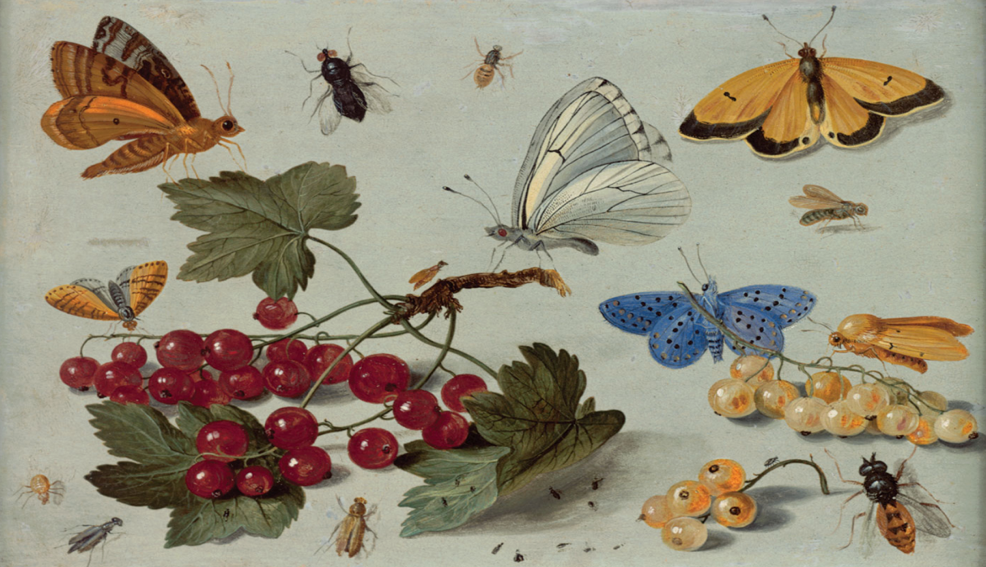
The program began in the morning with a detailed Study-tour of the exhibit in the Art Gallery for a select group of invited scholars. Susan Fraser, Director of the Mertz Library welcomed the group of twenty-five researchers in the Library Rotunda. Among the guests of honor, were Sir Peter Crane, President of the Oak Spring Garden Foundation, and Tony Willis, Head Librarian of the Oak Spring Collection, home of the art works on display. Also present was Professor Lucia Tongiorgi Tomasi, who did so much to further the knowledge of Bunny Mellon’s remarkable botanical collection in her various publications. Following Susan’s welcome words, Tony Willis offered a short introduction and set the atmosphere by explaining the close relationship between Mrs. Mellon’s knowledge of gardening and passion for collecting botanical art works.
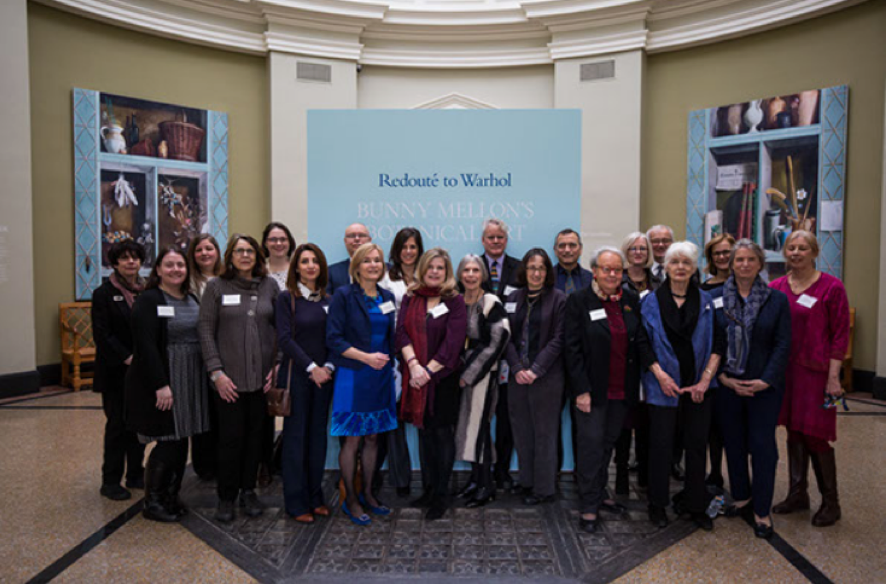
The viewing and in-depth discussion of the artworks was facilitated by five experts: Therese O’Malley, Associate Dean, Center for Advanced Study in the Visual Arts (National Gallery of Art), moderator for the morning program; Roger S. Wieck, Melvin R Seiden Curator and Department Head Medieval and Renaissance Manuscripts (The Morgan Library Museum); Lucia TongiorgiTomasi, former Professor of Art, Università di Pisa, Member of Accademia Nazionale dei Lincei and co-curator of the exhibit; Elizabeth Hyde, Professor of History at Kean University; and Paula Deitz, Author and Editor of The Hudson Review.
The advantage to having such a study-day was clear from the outset by the way it brought together scholars whose expertise highlighted some of the lesser known, yet essential aspects of the individual works. When discussing two of the medieval “Books of Hours,” both entitled Horae Beatae Mariae Viriginis, Roger Wieck pointed out the exceptional popularity of this particular genre of work— exceeding the Bible—during the Middle Ages. Wieck explained how women used these books not only to record important family information, such as births, christenings, marriages, and deaths, but also to teach their children how to read. In addition to capturing the stunningly realistic and entomological details in their margins, these illuminated manuscripts stand as testaments to the significance of “Books of Hours” in the daily lives of elite, literate women.
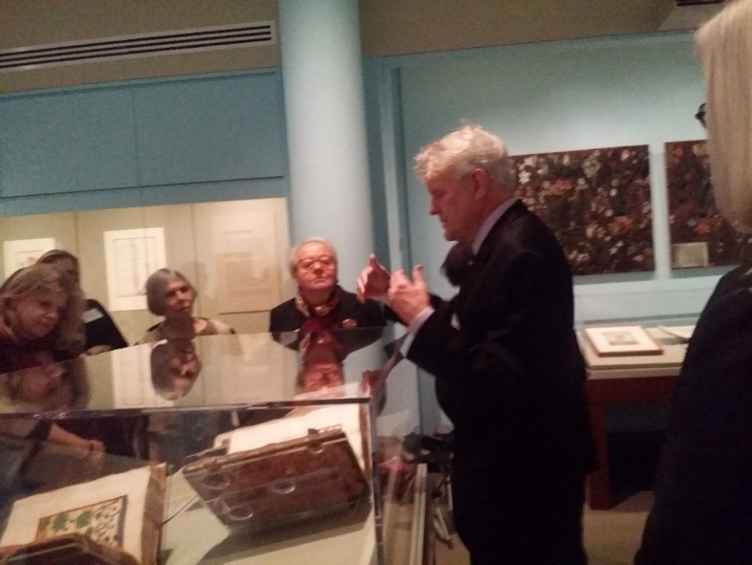
In in her discussion of Girolamo Pini’s stunning, early 17th-century flower paintings, Lucia Tongiorgi Tomasi suggested that the connection between Tuscan art and the emergence of late-Renaissance science is evident in the way a key was used to number and label each carefully depicted flower specimen. The key itself is painted in tromp l’oeil fashion, “pinned” to the canvas in the lower right hand corner. In choosing the unusual bronze-colored background for his paintings, Pini may well have been inspired by the dark brown background of the famous medieval mille fleurs tapestry that hung in the cathedral in his hometown of Pistoia, Tomasi pointed out.
Elizabeth Hyde highlighted Jacques le Moyne de Morgues’ watercolor “A Young Daughter of the Picts.” She spoke not only about the increasing association between flowers and femininity in the Early Modern Period, but also about the combination of Old and New World flora, pictured in the body of the legendary princess. This equation of an ancient European past with the growth of the New World, in the form of New World flowers, reveals how Early Modern Europeans were actively projecting the Old World onto the New.
Paula Deitz drew attention to some of the modern works in the collection, relating them to Bunny Mellon specific sense of aesthetics and feeling for color. Pablo Picasso’s “Pots of Flowers” may be considered forerunners of his famous “Peace-bouquet,” a work that became the first iconic dorm-room poster of the late 1960s and ’70s.
Bunny Mellon particularly liked Andy Warhol’s whimsical “Vine Leaf Marinade,” which—as Paula Deitz showed by holding up a complete copy—formed part of young Warhol’s little-known, late 1950’s vintage cookbook, a parody of the serious volumes from the period. Finally, did Bunny Mellon see herself in the stately woman standing in the garden, contemplating for a moment what next step to take to improve the grounds? Whether she did or not, this study by Augustus Edwin John, entitled “Dorelia in the Garden,” was one of Bunny Mellon’s favored works and hung in her private rooms at Oak Spring Beautifully moderated by Therese O’Malley, the study tour invoked a number of dynamic and innovative methods for appreciating some of the more inconspicuous aspects of these exceptional art works.
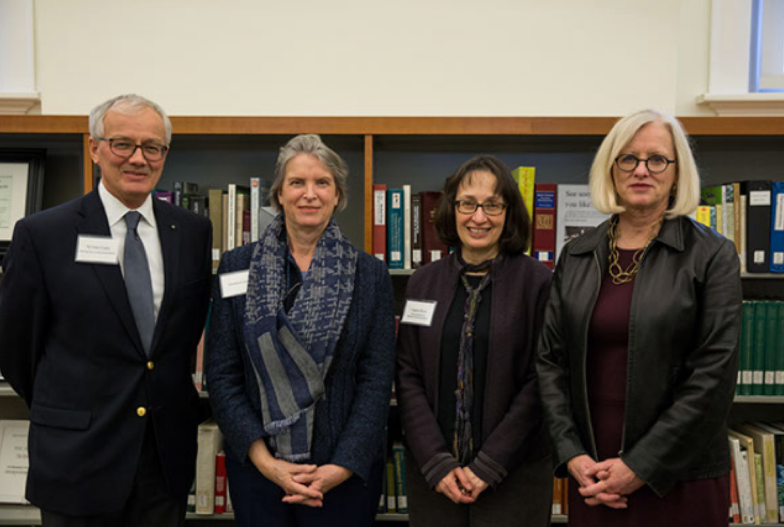
The program continued in the afternoon with a colloquium open to a wider public, held in the Mertz Library’s Reading Room. A large group of students and visitors enjoyed presentations by four notable speakers. They included Sir Peter Crane, President of the Oak Spring Garden Foundation, Therese O’Malley, Associate Dean, Center for Advanced Study in the Visual Arts (National Gallery of Art), Lugene Bruno, Curator of Art and Senior Research Scholar at Hunt Institute for Botanical Documentation (Carnegie Mellon University), and Elizabeth Eustis, Independent Scholar and contributing author to Flora Illustrata.
After a welcome and introduction by the hosts, Vanessa Sellers, Research Coordinator of the Humanities Institute, and Joanna Groarke, Director of Public Engagement and Library-Exhibitions-Curator, the presentations began Sir Peter Crane was pleased to greet the enthusiastic audience saying that this was in many ways a “coming out party” for the new Oak Spring Garden Foundation. After a period of reconstruction, Oak Spring has just opened its doors as a new research center, with the mission to inspire “fresh thinking and bold action” on the history and future of plants, the art and culture of gardens and landscapes, thanks to Bunny Mellon remarkable vision.
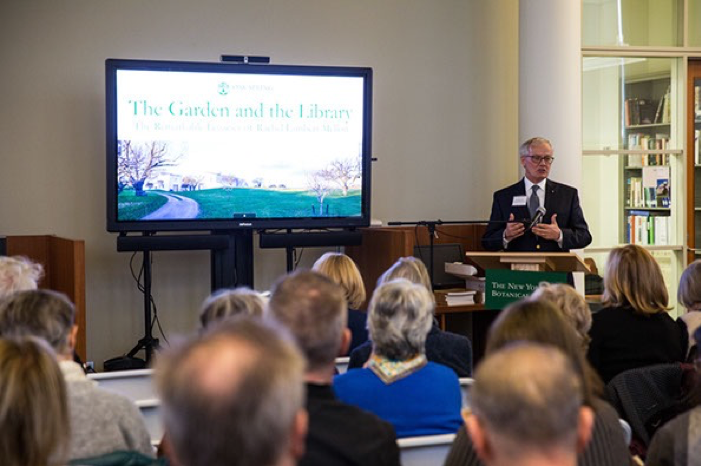
The productive combination of patronage and professional expertise embodied by people like Bunny Mellon, Mildred Bliss, Rachel Hunt, and Dr. David Andrews (whose collection is kept in the Mertz Library), became a recurring theme, as each speaker discussed the treasures of these remarkable collectors. For instance, Rachel Hunt’s collection was the result in part of her close relationship with her bookkeeper Euphemia Bakewell, while Mildred Bliss’s gardens could not have existed without the intimate collaboration with her landscape designer, Beatrix Farrand. To some extend these presentations all revolved around not just great (women) collectors and patrons, but about the relationship between women and professionalization at the start of the 20th century. The event concluded with a self-guided tour of the exhibition of Bunny Mellon’s Botanical Art, where participants had the opportunity to see some of the unique pieces close up, understanding and appreciating them on a new level.


What a Wonderful review of the exciting events of this quite special day at our beloved Mertz Library.
Thank you, Vanessa, for allowing all your readers to enjoy some of the insights gained on January 27th.